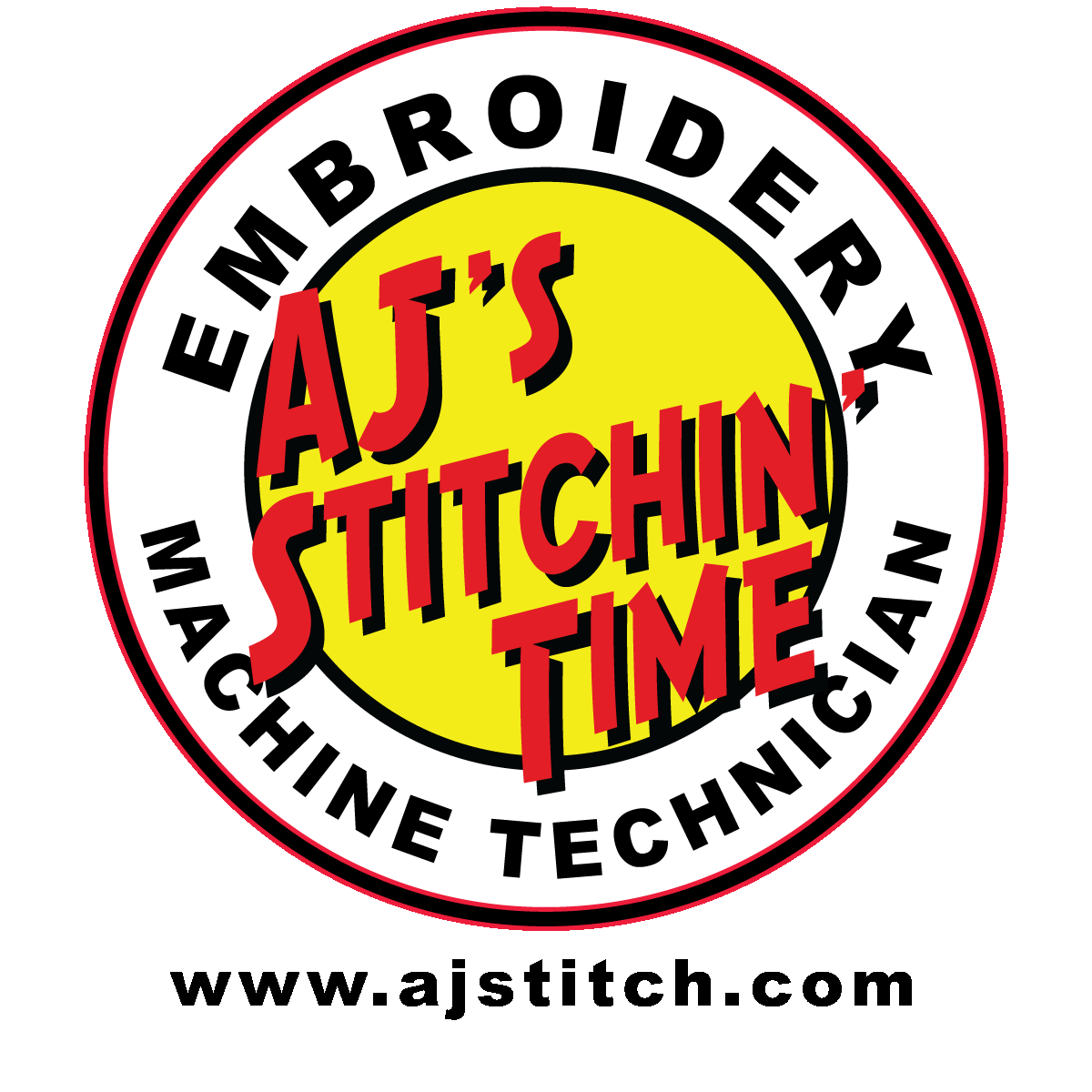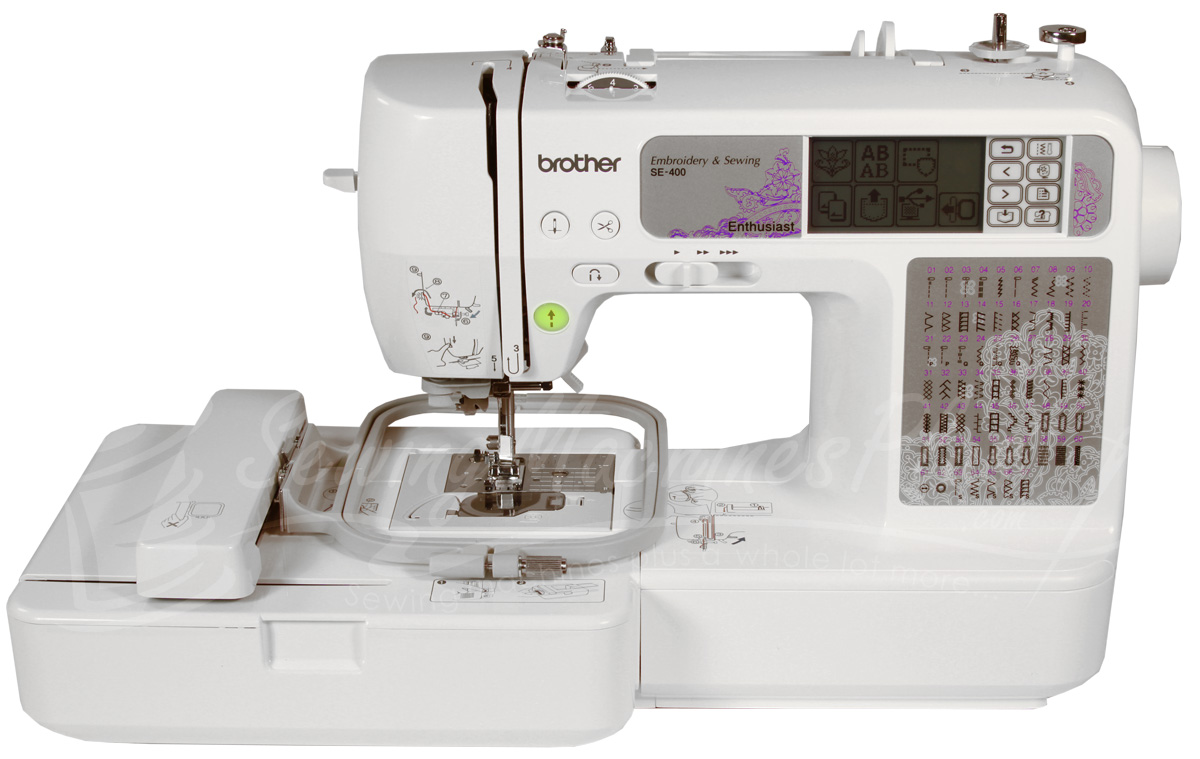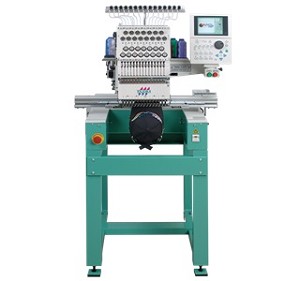|
Which embroidery machines are best and what to look out for when shopping for a machine. Breaking into embroidery? Thinking of adding an additional embroidery machine to your shop? Should you buy a single head machine or a multi-head machine? Here are several things that you need to consider when buying an embroidery machine. During my time working on embroidery machines I have seen a huge variety of clients that have been successful in this industry. The main things that makes an embroidery business successful is turning out quality products, producing the items when you promise them, and finding your niche in the business.
|
|
Turning out quality products: You only have one chance to impress a customer, so I advise you to never let anything go out the door that you are not completely happy with. Too often I have clients that are new to the business and buy an embroidery machine. They are so excited and start taking orders from customers, sometimes even before they get the machine. Be aware that there is a learning curve that comes with embroidery. When we got our machine, it took us several weeks to turn out a consistent product. If you do your own digitizing it can take months to be consistent. Producing the items when you promise them: Delivering your product when you promise is tremendously important. Do not promise something this afternoon if you are not sure you can deliver. I would rather tell a customer that you can’t get to it until Friday and call them to tell them that you completed it early. Finding your niche is important: There are all kinds of sources for customers, you need to identify your customer base. Some examples… sports, public safety, military, motorcycle clubs, schools, Greek organizations, churches, weddings, funerals, children, Christmas, fraternal organizations, monogramming, and the list goes on. You can focus on any one or combination as your customer base. You may want to focus on several groups so if one has a down season the other kicks in.
|
Types and Classes of Embroidery MachinesThere are so many name brands and models of embroidery machines it is difficult decide which is best for my needs. Embroidery machine manufacturers do not follow strict guidelines in designing their machine and the attributes cross over from one type to the other. You need to consider what you want to do with your machine and where you want to be in the future. If you are just going to stitch out a few designs for the grandkids for birthdays and Christmas, you may not want to shell out $16,000 for a top of the line machine. If you are going to be turning out production of 50 to 100 shirts at a time you may want to look at something more than a tabletop to get the job done. There are three basic types or classes of embroidery machines. There are tabletops, intermediate and commercial. Here is a general breakdown of the machines.
|
Tabletop:Name Brands: Bernina, Brother HE, Janome, Pfaff, Singer, Price Range: $1,500 - $4,500 Marketed to: Hobbyist, Personal use Sewing Field: 9" X 12" Needles: 1 Speed: 1,000 SPM Notes: |
IntermediateName Brands: Baby Lock, Brother Pro PR1000e, Happy Voyager Price Range: $7,000 - $14,000 Marketed to: Hobbyist, Small business, Monogramming Sewing Field: 9" X 12" Needles: 6-15 Speed: 1,000 SPM Notes: |
CommercialName Brands: Barudan, Melco AMAYA XTS, Pantograms, SWF, Tajima, ZSK, Price Range: $9,000 - $27,000 Marketed to: Business, and Commercial, Sewing Field: 14" X 22" and larger Needles: 15 - 16 Speed: 1,000 SPM to 1,600 SPM Notes:
|
Which is the best brand of embroidery machine to buy?Which is better? Ford or Chevy? The majority of Commercial Embroidery Machines are made in China, Korea, Japan, and Germany. Just about, all of them share the same basic mechanical design. They are in fact CNC machines. CNC (Computer Numeric Controlled) machines move things in a X axis (left/right) and Y axis (up and down) while the Z axis (the router, laser, print head, or in this case the sewing machine does their respective jobs.) When you are shopping and comparing embroidery machines there is a Price/Quality scale that you will encounter. Most of your customers would not be able to tell the differrtnce in a design stitched on the various machines. Like I mentioned above, the majority of commercial embroidery machines are made in Germany, Japan, Korea and China. Like vehicles from the respective countries embroidery machines tend to go up in price and quality from one to another. In China and Japan there are companies that build embroidery machines for several distributors. If you wanted to start your own embroidery machine company, you can bring your list of requirements or menu to one of these companies, they will build you 500 or 1000 machines and put your name on it. In fact, many of the parts are interchangeable. A Toyota 9000 and a Tajima Neo TEJT were made in the Tokai Industrial Sewing Machine Company and use the same parts book and part numbers. The main difference in the machines is the components and workmanship included in the machines. To make it a little simpler to understand consider the Chevy Silverado and the GMC Sierra. Both share the same basic design and use the same parts. The difference is in the workmanship and cosmetics of the vehicle. This analogy is the same for Commercial Embroidery Machines. A Meistergram Pro 1500 and a Ricoma RCM 1501 PT look remarkably similar and many of the parts in both are interchangeable. The Feiya multi-head and a Consew multi-head are practically the same machine, mechanically speaking. Most of the Chinese models use the same software. The differences in the machines lie in the quality of the parts and workmanship that the manufactures use when the machines are assembled. Some have better motors and solenoids than the other. One may use a different tensioning system than the other. One may be put together better than the other. It is hard to say which one stands out above the other when you talk about quality. The companies are constantly changing and improving their machines and the components. A machine that had a few problems three years ago may have had the kinks worked out and the machine is better now.
|
Let us look at the quality of the machine verses cost.Japanese machines tend to be higher quality than Chinese machines, they also cost more. Tajima, and Barudan, as an example, all have excellent records when it comes to quality. The Chinese machines tend to be lower in cost. You can buy a Chinese machine for half or two-thirds the cost of a typical Japanese machine. The balance of cost verses quality is one of the main things that you need to look at when comparing the machines. Do you want a Mercedes or a Ford Taurus? The Mercedes may never break down, but you end up paying for that quality up front. The Ford Taurus will do the same thing that the Mercedes will do, it will take you from point A to point B, but you may have to do a little maintenance on it along the way. If they are tuned right and correctly working most of the machines will give you a good-looking product. Most people cannot tell the difference in which sample is sewn from which machine. |
Service and support should be a HUGE consideration when buying a machine.I have worked on some of the bigger name machines and waited four to six hours to talk with a technician. I am still waiting on the call back for a couple of machines. Some of the more prominent companies have sad service ratings, especially if you don’t buy the machine from them. When you buy the machine from a third party you may have to work through that dealer for support. Check to see if you have a service technician in your area and check his prices. I live and work out of Atlanta, Georgia and I work on machines all over the United States, I would be happy to help you with your machine but it is a little expensive to get me to Idaho.
Technicians are a good source for information on machines.Check out the Company that you are buying the machine from. Has it been in business for a while? How is their support history? Are you buying from the manufacturer or from a third party? |
Single head or multi-head machines?Do I need a single or a multi-head machine? This is a great question, and the answer depends on what you intend on doing with your machine. If someone gave me a blank check and told me to set up an embroidery shop, I would buy a couple of single head machines and then a couple of multi-head machines. The multi-head machines are for running product, and the single heads are for running test stitch outs, names, and monograms. I would rather have two 6 head machines than one 12 head because if one breaks down, I am not out of business. Of course, most people don’t have blank checks laying around so you may need to start with either a single or a multi head machine.
Multi-Head Machines –Pros-
Cons-
Single Head Machines –Pros-
Cons-
|
Should I buy a new or used machine?If you are new to embroidery you may want to consider buying a new machine as your first. With your new machine you usually get technical support, training, technical support, warranties, technical support, and it is easier to get financial support. Oh, and did I mention that with a new machine you can get TECHNICAL SUPPORT? You can save substantial money buying a used machine. The bottom line is this. You can get a good machine in your budget but there are a lot of pitfalls. Do your homework before you spring for a machine. You don’t want a $3000 boat anchor Generally speaking, I have found that any embroidery machine has three different life spans:
Here are some things that you should consider when buying either an old or new machine…
When you consider buying either a new or used machine you should realize that you are weighing price against quality. I like to compare embroidery machines to automobiles, do you need a Mercedes to drive to Walmart, and take the kids to soccer practice? You might want to look at something a little better than a Yugo, an Edsel or something that is going to stay in the shop most of the time. You will pay more for a higher quality machine In China and in some other countries there are companies that build machines. You bring your blueprints and machine specs to the company and order 500 machines and they will build you an embroidery machine and put your name on it. Feiya cannot sell their machines in America so build machines and rebrand them. Some companies focus on quality and consistency while others focus on turning a dollar. Beware of any Chinese embroidery machine older than about 2010.
Stay away from Inbro, Prodigi, and Aemco. The companies are no longer in business and parts are difficult to get. The machines are still bouncing around in the market and you might see one for sale. Barudan, Brother, Happy, Melco, SWF, Tajima, Toyota, and ZSK are great machines but any embroidery machine has a definite lifespan. Do your homework. I would be very warry of anything over 10 years old, especially the Chinese machines. . There are a few things you probably want to consider if you are looking for a machine this old.
|





